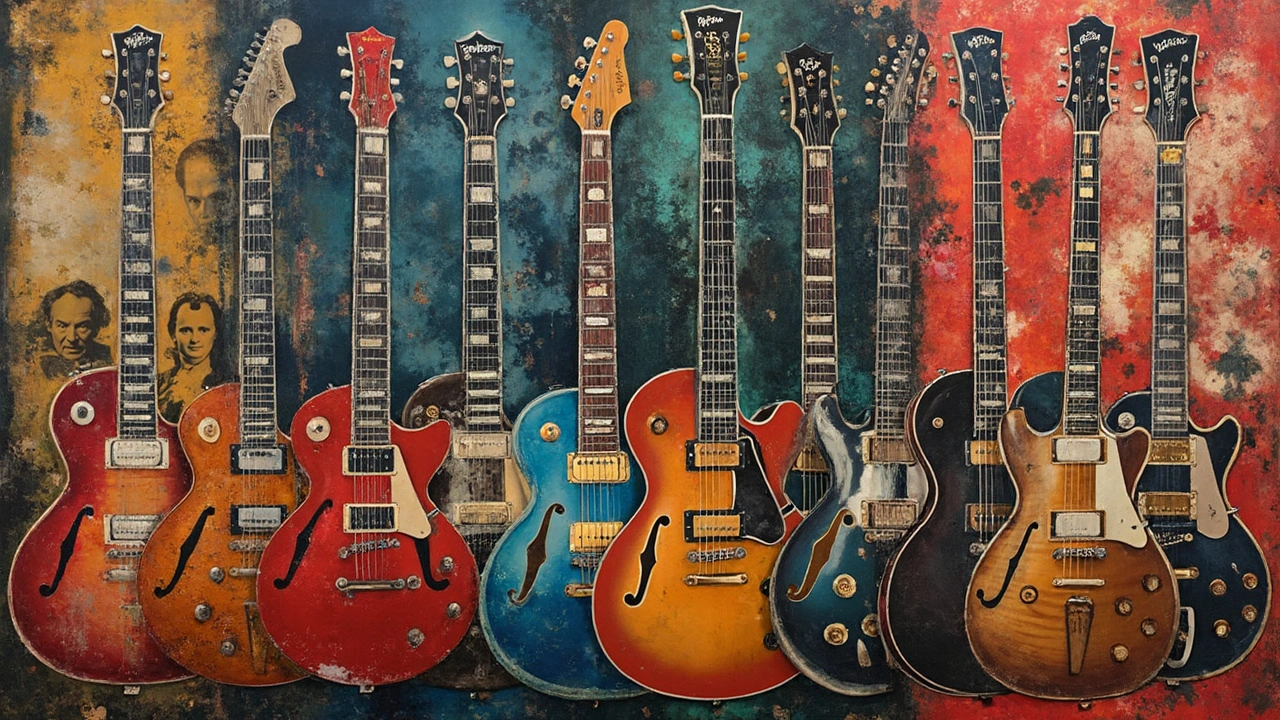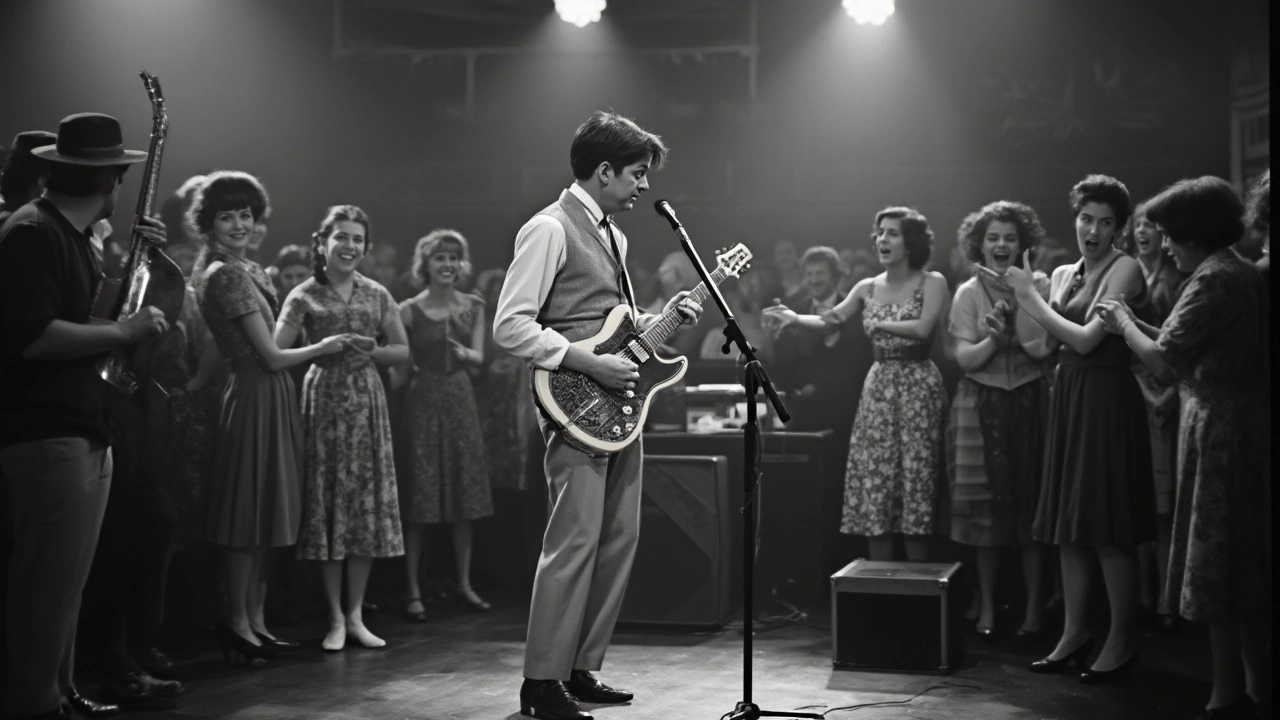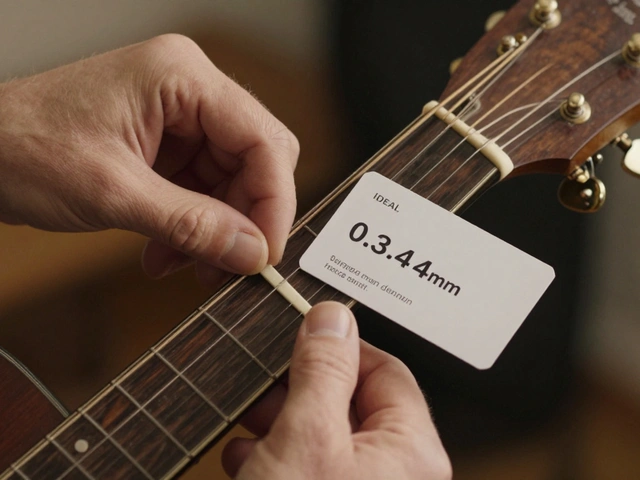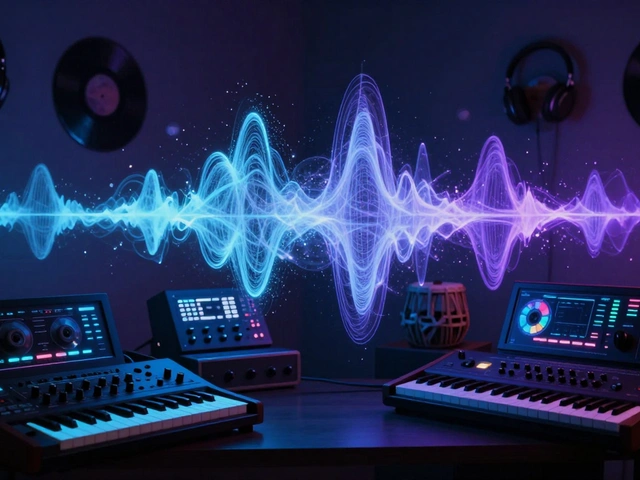The electric guitar didn't just appear one day out of thin air. It has a really interesting backstory that ties into the birth of rock and roll. This tale starts as far back as the 1930s, where the hunt for louder sound in live performances led to its invention. Can you imagine a world where amplifiers and distorted rock riffs don't exist? That's a whole different reality, right?
Did you know the very first commercially successful electric guitar was the Rickenbacker 'Frying Pan'? Sounds funny, but it made a huge splash back in the day. This innovation was all about being heard in orchestras and bands where acoustic guitars faded into the background.
Fast forward a few decades, and the electric guitar has seen some serious changes thanks to companies like Fender and Gibson. We're talking sleek designs, better pickups, and the kind of sound versatility that got Jimi Hendrix rockin’ away with his soul-stirring riffs.
- The Birth of the Electric Guitar
- Key Innovations Over the Decades
- Iconic Guitarists and Their Influence
- Technological Advancements in Guitar Design
- Tips for Choosing Your Electric Guitar
The Birth of the Electric Guitar
The story of the electric guitar kicks off in the heart of the 1930s. Musicians wanted to stand out during loud big band performances, and let's face it, acoustic guitars didn't quite cut it amidst all the horns and percussion. Enter the quest for an amplified version.
One of the earliest breakthroughs was the Rickenbacker 'Frying Pan'. This was the first commercially successful electric guitar, about as big as a pan with a circular body, hence the catchy name. Designed by George Beauchamp and Adolph Rickenbacker, this beast was primarily used in Hawaiian and jazz music, aiming to amplify the sweet melodies that were often drowned out.
Magnetic Pickups and Their Magic
What made these early electric guitars tick was the invention of the magnetic pickup. Basically, it's a tiny gizmo that converts string vibrations into electrical signals, which can then be boosted by an amplifier. This technology turned the game upside down and gave birth to the modern electric guitar sound we recognize today.
Then came the solid-body guitars, a major step forward. Enter the Gibson Les Paul in the 1950s—an absolute icon. Les Paul, the guitarist and inventor, worked with Gibson to create this pioneering design, significantly reducing feedback and making the electric guitar a staple in rock music.
Now, you might think the guitar itself didn’t change much since those early days, but tech was always barging in with improvements. Manufacturers like Fender with the Telecaster and Stratocaster models turned what started humbly into a global obsession.
The early days of electric guitars were marked by a fascinating mix of innovation and necessity. When you think about it, these developments were not just about making music louder, but about transforming how musicians expressed their creativity on stage.
Key Innovations Over the Decades
The journey of the electric guitar is filled with technological leaps, each transforming how music is experienced. Starting from the early pickups to today’s digital interfaces, each decade brought something new to the table.
1930s and 1940s: The Dawn of Amplification
The 1930s saw the birth of the electric guitar with the introduction of the Rickenbacker 'Frying Pan.' This era was all about getting heard, and magnetic pickups were a game-changer, allowing guitars to be loud without the hefty body of their acoustic counterparts.
1950s: The Sound of Rock 'n Roll
Enter the 1950s, when the world fell for the Fender Telecaster and Stratocaster. These guitars looked different with their sleek, solid bodies, but more importantly, their sound shaped the emerging rock genre. Their reliable build and innovative tone control features let musicians play like never before.
1960s and 1970s: Experimental Sounds
The 60s and 70s were pretty wild for the electric guitar. Think Jimi Hendrix and his epic solos. This was the time when effects pedals, like fuzz and wah-wah, started making waves. Musicians loved the way these effects could create surreal soundscapes, adding layers to their music.
1980s: The Age of Shredding
The 80s were all about speed and expression, thanks to the advent of the 'superstrat.' This was born from the demand for higher playability and more intense sound—something guitar legends like Eddie Van Halen championed. Locking tremolo systems became standard for dive-bombing without tuning disaster.
1990s to Today: Tech Takes Over
Modern guitars have embraced the digital age. Brands like Line 6 introduced modeling amplifiers, simulating classic gear. Wireless technology, digital effects, and even guitars with MIDI capabilities are now part of the scene. The possibilities seem endless, as smart guitars connect to apps and experiments with materials like carbon fiber push boundaries further.
Each decade has built upon the last, crafting a legacy of innovation that continuously reshapes what the electric guitar is capable of delivering. For any budding guitarist, understanding these innovations is as important as learning the chords.
Iconic Guitarists and Their Influence
When you think of the electric guitar, a few legendary names come to mind. These iconic guitarists not only played the instrument but also shaped the way we hear and play music today. Let's dive into some trailblazers who left their mark on history.
Chuck Berry: The Original Showman
It’s hard to talk about the electric guitar without mentioning Chuck Berry. This guy practically laid down the blueprint for rock and roll. With hit songs like 'Johnny B. Goode,' he brought energy and flair, making the guitar a centerpiece of his performances. Before Berry, the guitar was more of a supporting role in bands. He turned it into the star of the show.
Jimi Hendrix: The Innovator
Jimi Hendrix changed what people thought was possible with a guitar. His use of feedback, distortion, and wild performance antics set him apart. Tracks like 'Purple Haze' and 'All Along the Watchtower' are classics because of his daring approach to sound. Hendrix didn't just play the electric guitar; he pushed it to its limits, making waves that continue to influence modern musicians.
Eric Clapton: Blues Meets Rock
Known as 'Slowhand,' Eric Clapton brought blues into the rock world. With bands like Cream, Clapton showed how the guitar could express deep emotion and complexity. His iconic riff in 'Layla' is a testament to his skill and passion.
Stevie Ray Vaughan: Resurrecting Blues
In the 1980s, Stevie Ray Vaughan revitalized the blues scene with his fiery style and soulful playing. Bringing back intricate blues licks to mainstream rock, his influence is seen in countless guitarists who have followed in his footsteps.
Each of these guitarists brought their unique twists to the essentials of modern music. Their legacies continue as new musicians pick up their guitars, inspired by the sounds and techniques these legends pioneered. So, when you grab your guitar, remember you’re not just playing music; you're joining a rich, evolving tradition.
Technological Advancements in Guitar Design
The journey of the electric guitar is a whirlwind of innovation and creativity. Since the early days, where sound amplification was the main focus, there have been many changes that shaped these six-string wonders into what they are today.
Pickup Evolution
Let's talk about pickups for a second. These little devices have had a massive impact. The shift from single-coil pickups to humbuckers in the 1950s, thanks to companies like Gibson, was a game changer. Humbuckers helped reduce that annoying hum and gave players a richer, warmer sound. Perfect for jazz and blues, and a key part of the rock revolution.
Materials and Design
The materials used for constructing guitar bodies, necks, and fretboards have also progressed. In the early days, wood was the go-to. Now, there's experimentation with other materials like carbon fiber and composites, making guitars lighter without sacrificing tone quality.
Sound Effects and Digital Tech
Sound effects and modifications have taken a giant leap forward. Back in the day, you'd have to rely on a separate pedal to get that killer effect. But with the rise in digital technology, many guitars now come with built-in effects. We're talking reverb, distortion, you name it. You can be a one-person rock band if you want.
Smart Guitars and Connectivity
And let's not forget smart guitars. A few years ago, Gibson introduced a guitar with robot tuners that automatically tune your guitar in seconds. There's also the rise of Bluetooth and USB connectivity. Now, guitarists can easily connect their instruments to computers, tablets, or even smartphones for recording, effects processing, and learning new riffs without ever leaving the couch.
Future Innovations
What’s the future for electric guitars? We're already seeing prototypes with shape-shifting bodies and touchscreens. The possibilities are endless, and it's clear that the electric guitar will continue to evolve with technology, inspiring musicians for generations to come.

Tips for Choosing Your Electric Guitar
Picking your first or next electric guitar can be a bit overwhelming with all the options out there. But don't sweat it! Whether you are a newbie or a seasoned player, there are a few things to keep in mind to make the choice a little easier.
Consider Your Genre
The kind of music you plan to play matters a lot. Into heavy metal? Look for guitars with humbucker pickups which offer a thicker sound. If you lean more toward blues or classic rock, single-coil pickups might be your friend. Brands like Fender and Gibson have models that cater specifically to different music styles.
Budget Matters
Let’s talk money. Electric guitars come in all price ranges, from wallet-friendly to the extravagant. You don’t always need the most expensive guitar to sound good, especially if you’re just starting. Many brands offer solid models for beginners, like the Yamaha Pacifica or the Squier Stratocaster.
Comfort is Key
Don't forget comfort! How the guitar fits you is super important. Try holding different models to see how they feel. Check the weight, the size of the neck, and how the body rests against you. Do you prefer a Strat-style body or a Les Paul? Find what feels right.
Check the Build Quality
A good guitar doesn't just sound good; it should be well-built too. Examine the finish, check for any visible imperfections, and test the knobs and switches to make sure they operate smoothly. It’s like buying a car, every detail counts.
Don’t Forget the Amplifier
The electric guitar shines with the right amp. You’ll want one that complements the guitar’s tone and suits your needs. Beginners might opt for combo amps, which pack everything in one box. They're also easier on the budget.
| Guitar Brand | Suitable Genre | Starting Price ($) |
|---|---|---|
| Fender Stratocaster | Rock, Blues | 600 |
| Gibson Les Paul | Rock, Metal | 800 |
| Yamaha Pacifica | All Genres | 200 |
Remember, the best electric guitar is the one that inspires you to play and create. Happy strumming!





